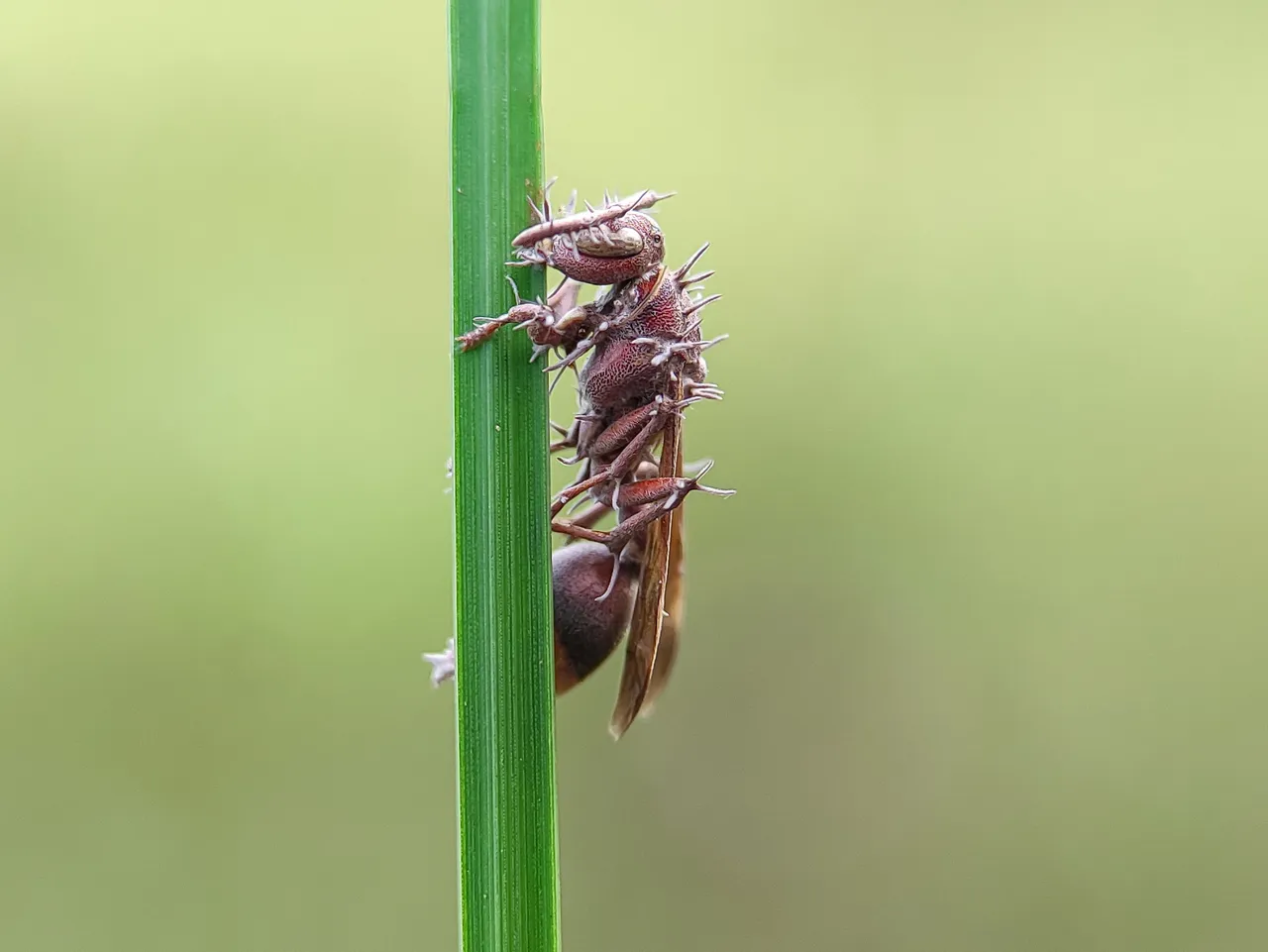
For those of you who are movie lovers, maybe you have watched "The Last of Us," a drama TV series that airs on the HBO channel. "The Last of Us" takes us to a fictional story about a mass Cordyceps fungus infection that mutates in humans and then triggers a global pandemic.
Damn! It makes me cringe when I remember it because it was the scariest drama series I've ever watched. I really can't imagine if such a terrible thing actually happened in the real life of mankind.
I'm not writing a review here about "The Last of Us" because I'm not good at reviewing movies. The question is, can Cordyceps fungus infections attack humans? So far, no such cases have been found, and we hope it never happens. But in the case of insects, Cordyceps fungal infections are really real and have been scientifically proven.
I have seen several cases of insects such as flies, ants, bees, and wasps being infected with the Cordyceps fungus, better known as zombie fungus. And this time I am again sharing some pics showing a paper wasp infected with the Cordyceps (Ophiocordyceps sp.)
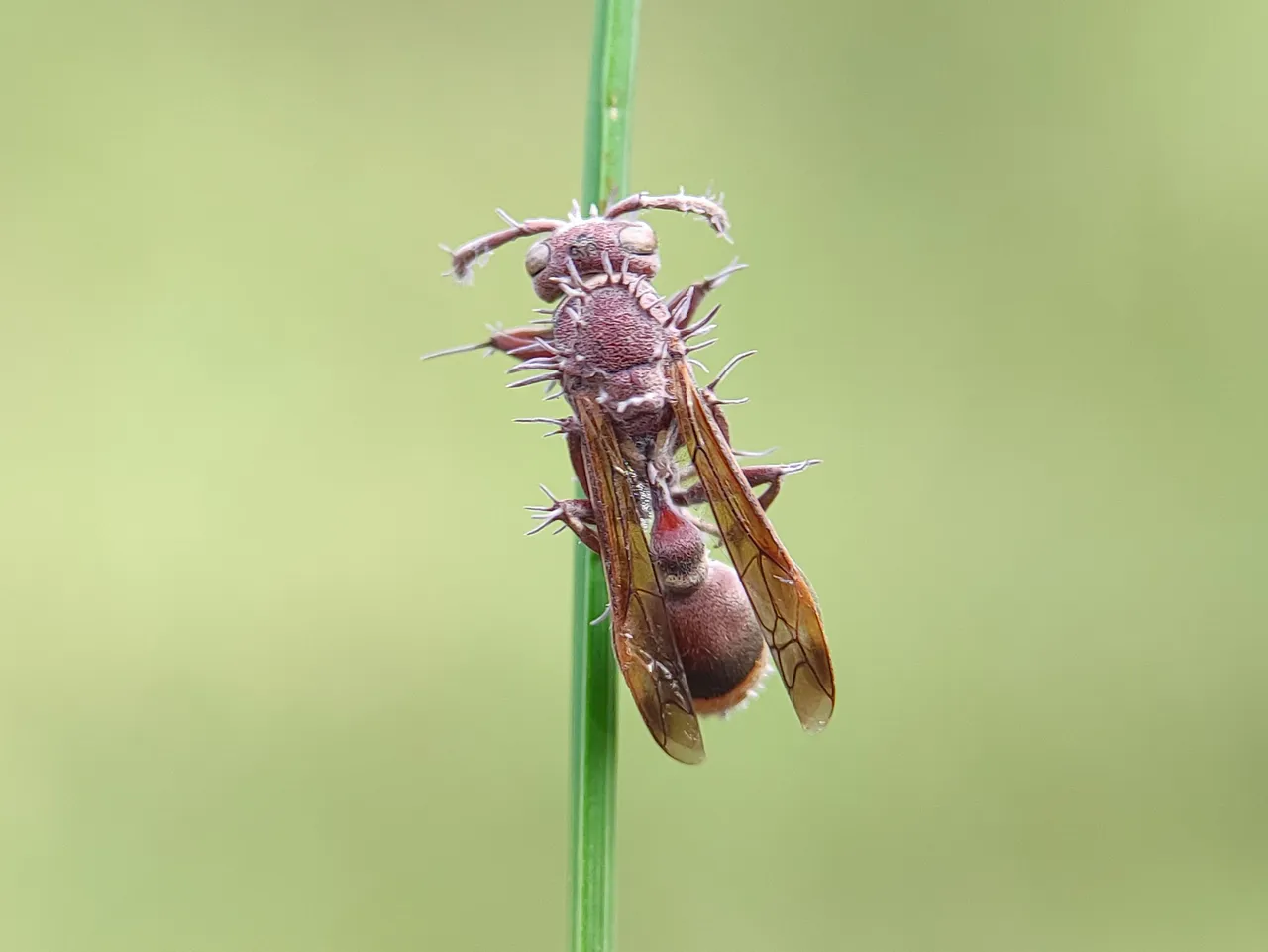
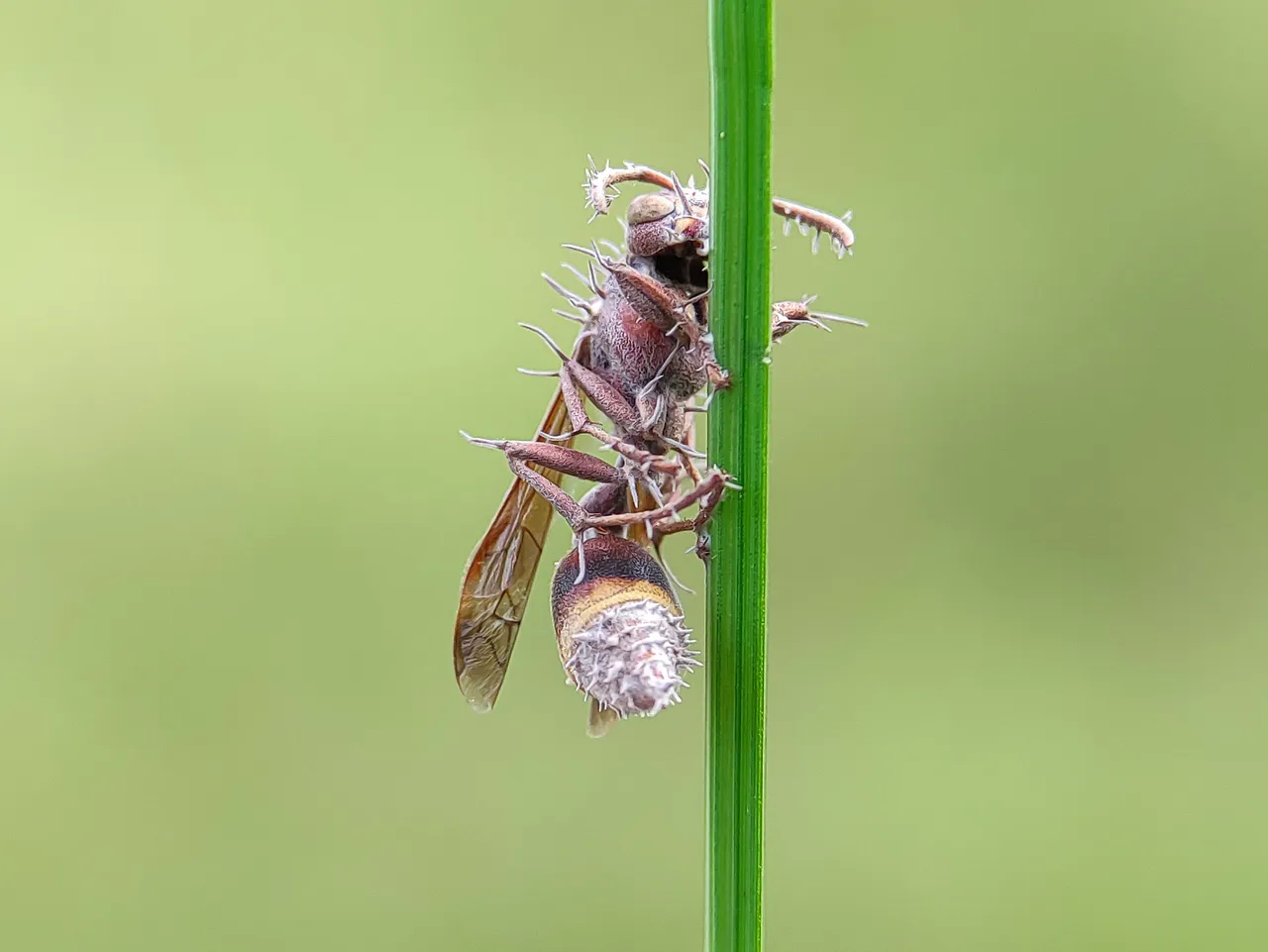
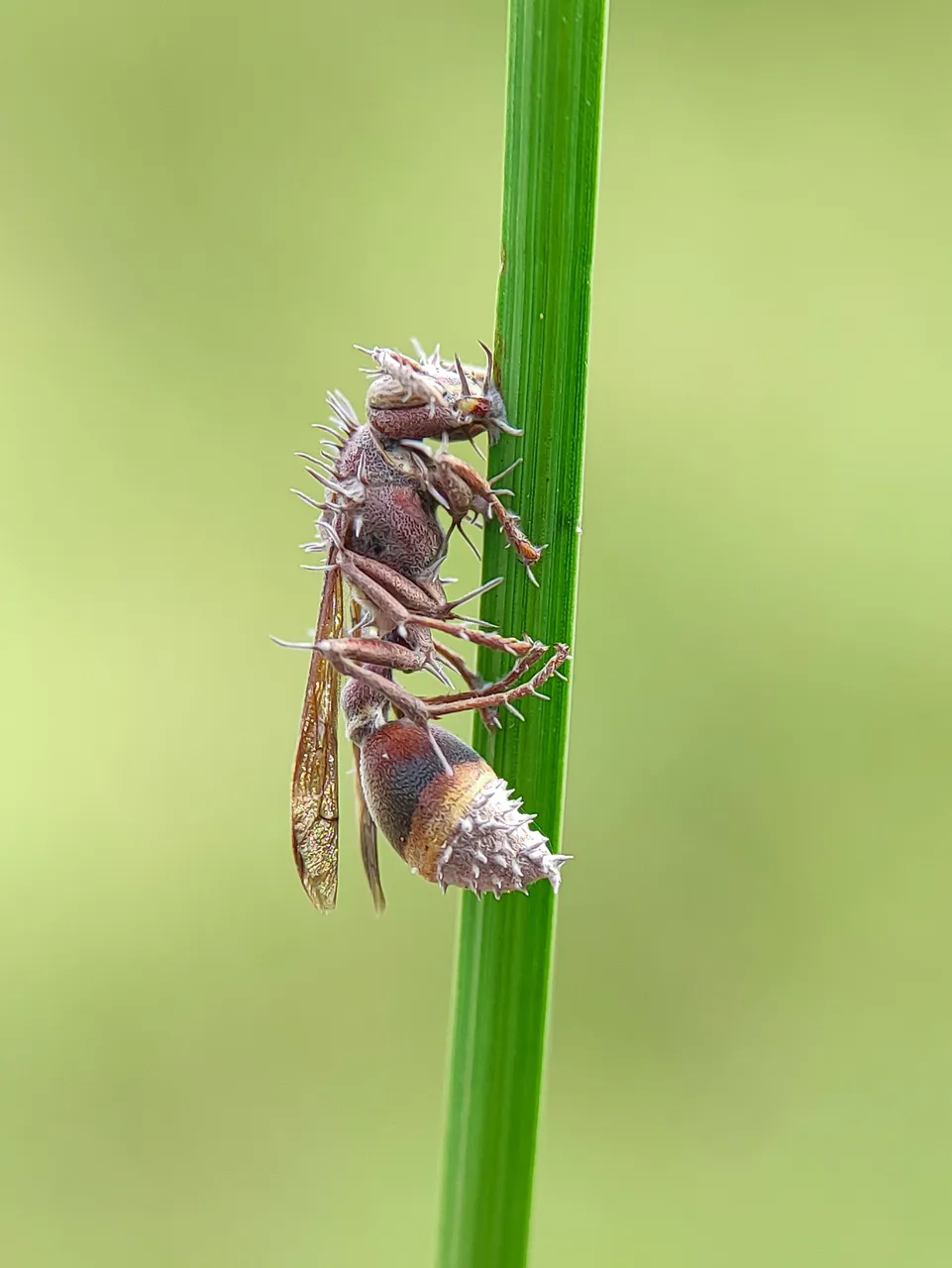
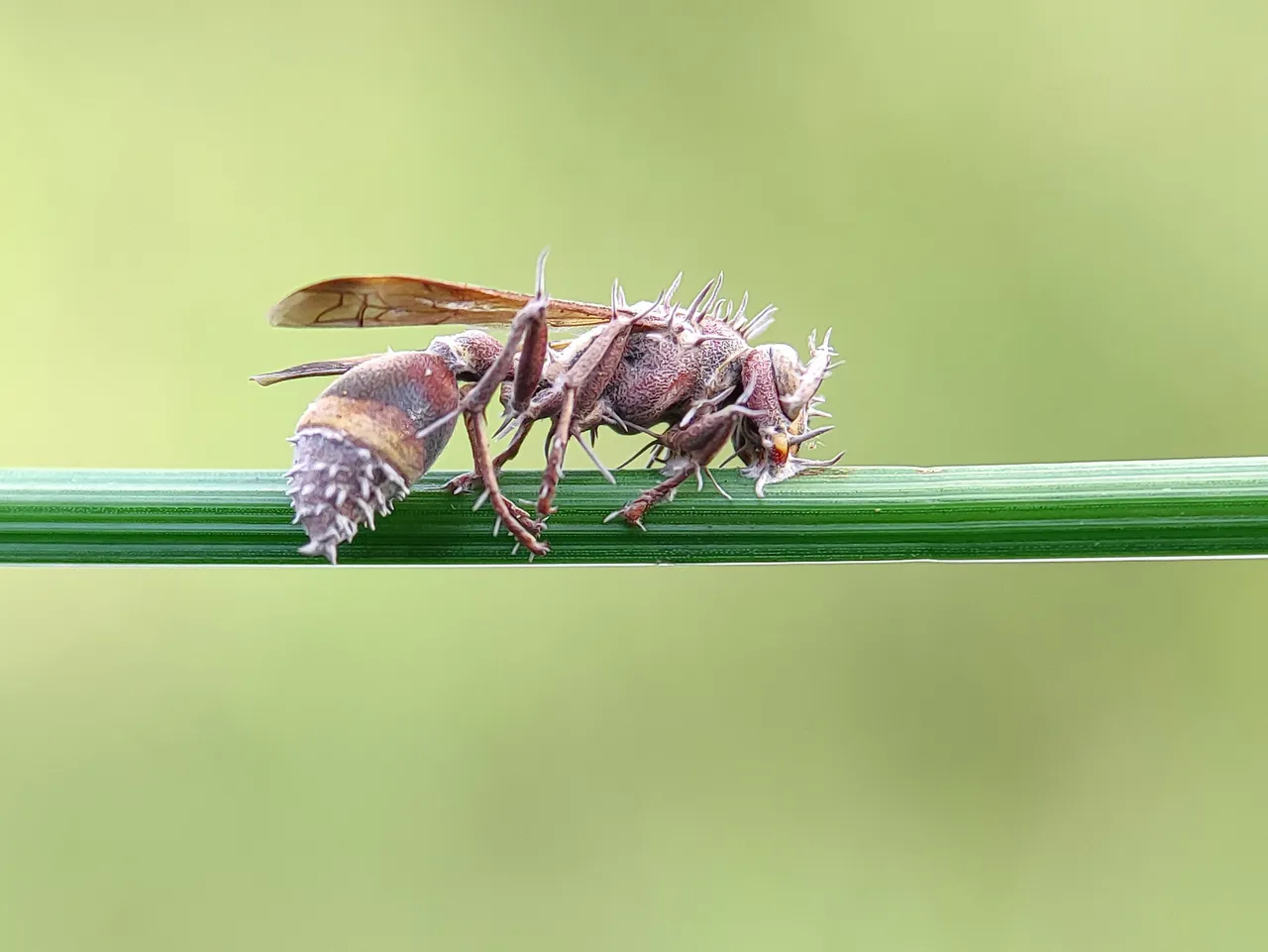
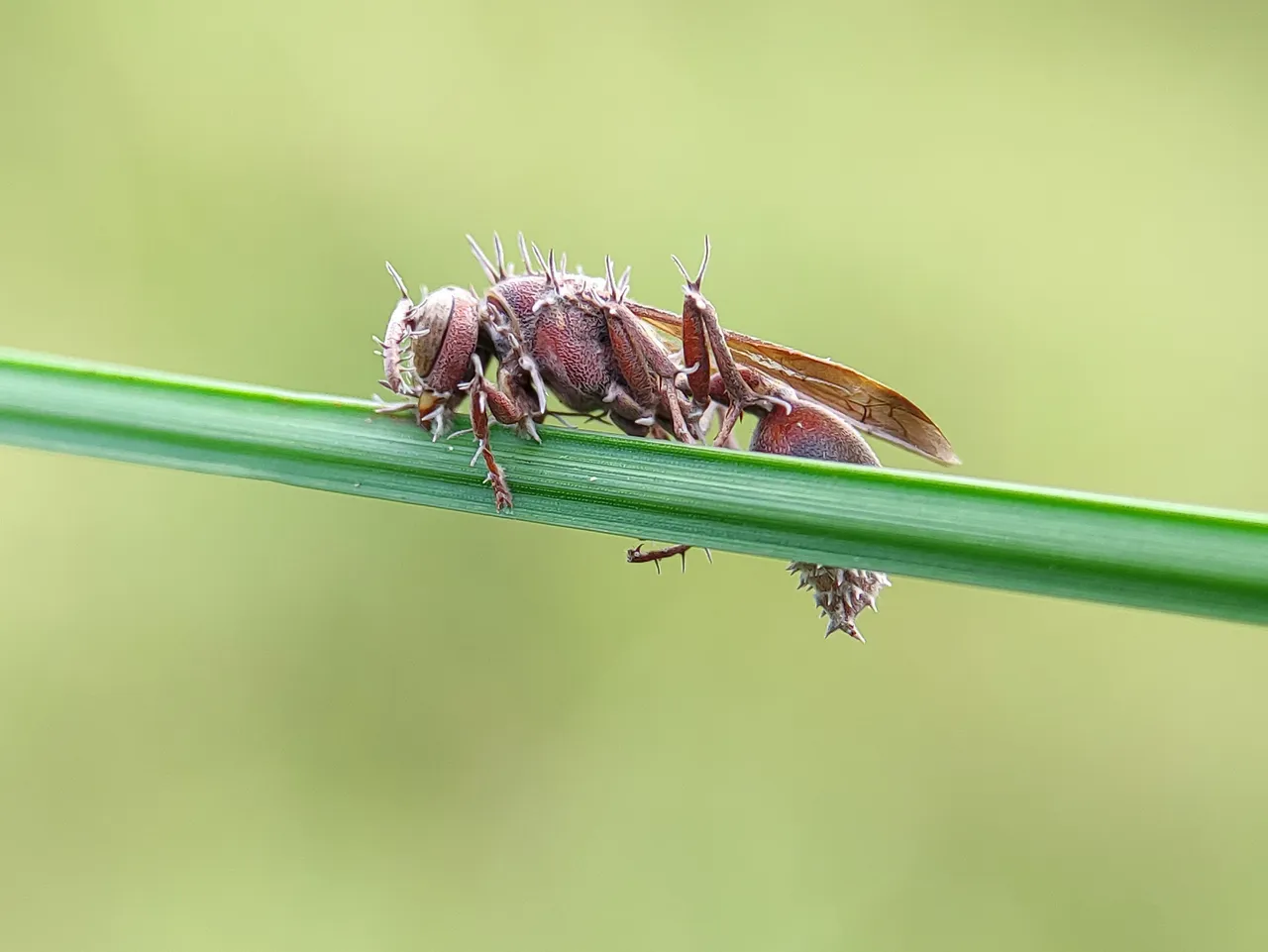
Even though this happens to insects, it's still a scary thing. How the fungus first begins to take over the nervous tissue of the wasp's brain and kill it until then uses the wasp's body as a host for the reproduction of spores until the fungus grows en masse there.